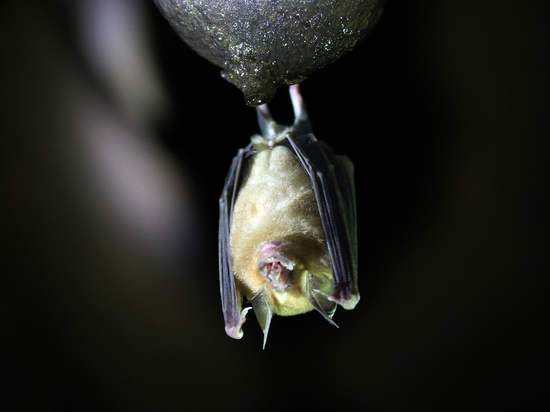Bats have prepared surprises: scientists have found new coronaviruses dangerous to humans
[ad_1]

Global pandemics may become regular
Bats are not as simple as they seem – in the last two and a half years, people have understood this very clearly. However, the new SARS-CoV-2 may seem like real flowers in comparison with what bats can still bring us, into whose habitats humans have been so rapidly encroaching in recent years. The authors of a new publication “Strategy for Assessing the Risk of the Spread of SARS-Associated Coronaviruses in Bats in Southeast Asia” in the journal Nature concluded that at least half a million people now live in habitats for viruses like the current SARS. And a scenario in which pandemics begin to become cyclical is becoming increasingly likely.
Even at the beginning of the last century, man and bats rarely touched. People did not touch their habitats, so the viruses that the representatives of the order of bats carried in themselves were not transmitted to bipeds. However, the further people began to delve into the jungle and develop impenetrable forests, the more viral outbreaks associated with mouse pathogens began to be observed among Homo sapiens.
At the beginning of this century, outbreaks of previously unknown coronavirus infections began to be recorded, which most likely brought bats into our lives. In 2002, the world was stunned by the news of a high-fatality case of SARS, which was caused by the SARS coronavirus. In 2012, there was an outbreak of the MERS coronavirus, the natural reservoir of which is also considered to be bats (it was transmitted to people from camels). In 2016 and 2019, there were little known outbreaks of porcine acute diarrheal syndrome SADS, which caused significant mortality among pigs in South China. Well, the apotheosis was the current SARS-CoV-2 pandemic, which has caused millions of cases and deaths, and the economic damage is likely to be in the tens of trillions of dollars. The moment has come when mankind must watch bats intensely and be ready for any trouble they can bring us.
The authors of the publication in Nature (an international group of scientists, including WHO experts) believe that the outbreaks of coronaviruses that have occurred this century have been disrupting the health and economy of the world for the past two decades. Some SARS-associated coronaviruses have learned to infect humans very effectively and are spreading more frequently than previously thought. “Each zoonotic release of a new virus represents an opportunity for evolutionary adaptation and further spread, so quantifying the extent of this release can help guide the choice of prevention programs,” said the authors, who determined the current distribution range of known carriers of wild bat coronaviruses and quantified them. intersection with human populations. And they came to the conclusion that on average 66,280 people are infected with these viruses annually (pandemic coronavirus was not taken into account in these calculations) in Southeast Asia. In general, about 500 thousand live in direct contact with bats, the main reservoir of coronaviruses in nature.
However, given the relatively large number of people who may be infected with bat coronavirus each year, it is likely that there are more such cases, but they are either not reported or missed by clinical surveillance. For example, targeted surveillance of patients with encephalitis in a small number of clinics in Bangladesh has shown that Nipah virus causes outbreaks each year with an overall mortality rate of about 70%, despite being only recently reported from that country.
The initial transfer of SARS and MERS into human populations is believed to have occurred via intermediate hosts (palm martens and dromedary camels). However, the role of martens in SARS is still unclear, and other bat coronaviruses appear to be able to directly infect human cells, including respiratory tract epithelial cells, and thus have the potential to be transmitted directly from bats to humans. In support of this idea, in China before the emergence of COVID-19, evidence of prior infection with coronavirus infection was found in communities living near bat populations, including in people who had no contact with intermediate carriers of SARS-CoV-2. Direct cases of bat-to-human transmission of the virus may be more frequent than reported but remain unrecognized because they cause mild symptoms similar to those of other infections, result in a small number of cases, or do not have sustained chains of human-to-human transmission, the authors say. articles. However, each case of virus transmission from the wild to humans presents an opportunity for viral adaptation that can facilitate human-to-human spread of the virus.
Many of the bat species (more than 400) that carry coronaviruses live in Southeast Asia. The diversity of coronaviruses in this region is probably high, but may be underestimated. The analysis identified regions in South China, Northeast Myanmar, Lao PDR and North Vietnam with the highest diversity of wild coronavirus host species in bats. These areas need to be closely monitored, the researchers said: outbreaks of any suspected infections with respiratory, flu-like illnesses and fevers of unknown origin should be taken on a pencil. “According to scientists, in these regions it is necessary to monitor the epidemiological situation on an ongoing basis in order to shoot down outbreaks on takeoff, which could potentially degenerate into a pandemic like COVID-19,” notes a well-known physician, therapist Alexei Vodovozov. And there are such candidates. For example, the coronavirus that causes acute diarrhea in pigs (SADS). It is impossible to discount the SARS, which seems to have gone off the radar, and so far the MERS, which is suspiciously quietly behaving. And we still don’t remember the “bat” Nipah virus with a lethality of under 70%. So the claims of some experts that humanity has entered a “pandemicene” – an era of continuous, successive pandemics, do not seem so unfounded.
[ad_2]
Source link








